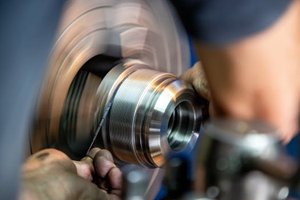The Critical Role of Dimensioning in CNC Turning Drawings
In CNC turning, a well-executed drawing with precise dimensions is the backbone of a successful project. Yet, I’ve seen countless cases where minor oversights in dimensioning led to scrapped parts, delayed deliveries, and blown budgets. The difference between a good and a great CNC turning drawing often comes down to how dimensions are applied and communicated.
Why Dimensioning Matters More Than You Think
- Manufacturability: Over-dimensioning or under-dimensioning can confuse machinists, leading to errors.
- Tolerances: Missing critical tolerances can result in parts that don’t fit or function as intended.
- Cost Efficiency: Proper dimensioning reduces machining time and material waste.
In one project, a client submitted a drawing with ambiguous tolerances on a high-precision aerospace component. The result? A 20% scrap rate and a two-week delay. After revising the drawing with clear GD&T (Geometric Dimensioning and Tolerancing) standards, we achieved a 100% pass rate and cut machining time by 15%.
Common Pitfalls in CNC Turning Drawings (And How to Avoid Them)
🔍 1. Over-Dimensioning: The “More Is Better” Myth
Adding unnecessary dimensions clutters the drawing and increases the risk of contradictions. Focus on critical dimensions only.
Case Study: A medical device manufacturer included every possible measurement, leading to confusion during machining. By reducing dimensions by 30% and highlighting only functional features, we improved clarity and reduced setup time by 25%.
⚙️ 2. Ignoring GD&T Standards
GD&T ensures parts meet functional requirements without over-constraining tolerances.
Expert Tip: Use positional tolerances instead of +/- tolerances for features like bolt holes. In a recent automotive project, this approach reduced rework by 40%.
💡 3. Missing Datum References
Without clear datums, machinists may interpret measurements differently. Always define primary, secondary, and tertiary datums.


Step-by-Step: Creating a Flawless CNC Turning Drawing
- Start with Critical Features
- Identify functional surfaces (e.g., sealing faces, bearing seats).
- Dimension these first, with tight tolerances.
- Apply GD&T Where Needed
- Use symbols like ⌀ (diameter) and ⌖ (position) for clarity.
- Specify Surface Finishes
- Indicate Ra values for critical areas (e.g., 0.8 µm for hydraulic seals).
- Review for Manufacturability
- Ask: Can this be machined in one setup? If not, revise.
Example Table: Impact of Proper Dimensioning
| Factor | Before Optimization | After Optimization |
|---|---|---|
| Scrap Rate | 15% | 2% |
| Machining Time | 5 hrs/part | 4.2 hrs/part |
| Cost per Part | $120 | $95 |
Lessons from the Field: A High-Stakes Case Study
A client needed 500 turbine shafts with a 0.005mm concentricity tolerance. The initial drawing lacked clear datums, leading to inconsistent measurements.
Solution:
– Redefined datums using the shaft centerline as Primary.
– Added GD&T callouts for concentricity and runout.
– Result: Zero rejects and a 12% faster cycle time.
Key Takeaways for Your Next Project
✅ Prioritize critical dimensions—less is more.
✅ Use GD&T to communicate intent—not just numbers.
✅ Validate with machinists—avoid assumptions.
By mastering these strategies, you’ll transform your CNC turning drawings from potential liabilities into blueprints for success. Precision starts on paper.
